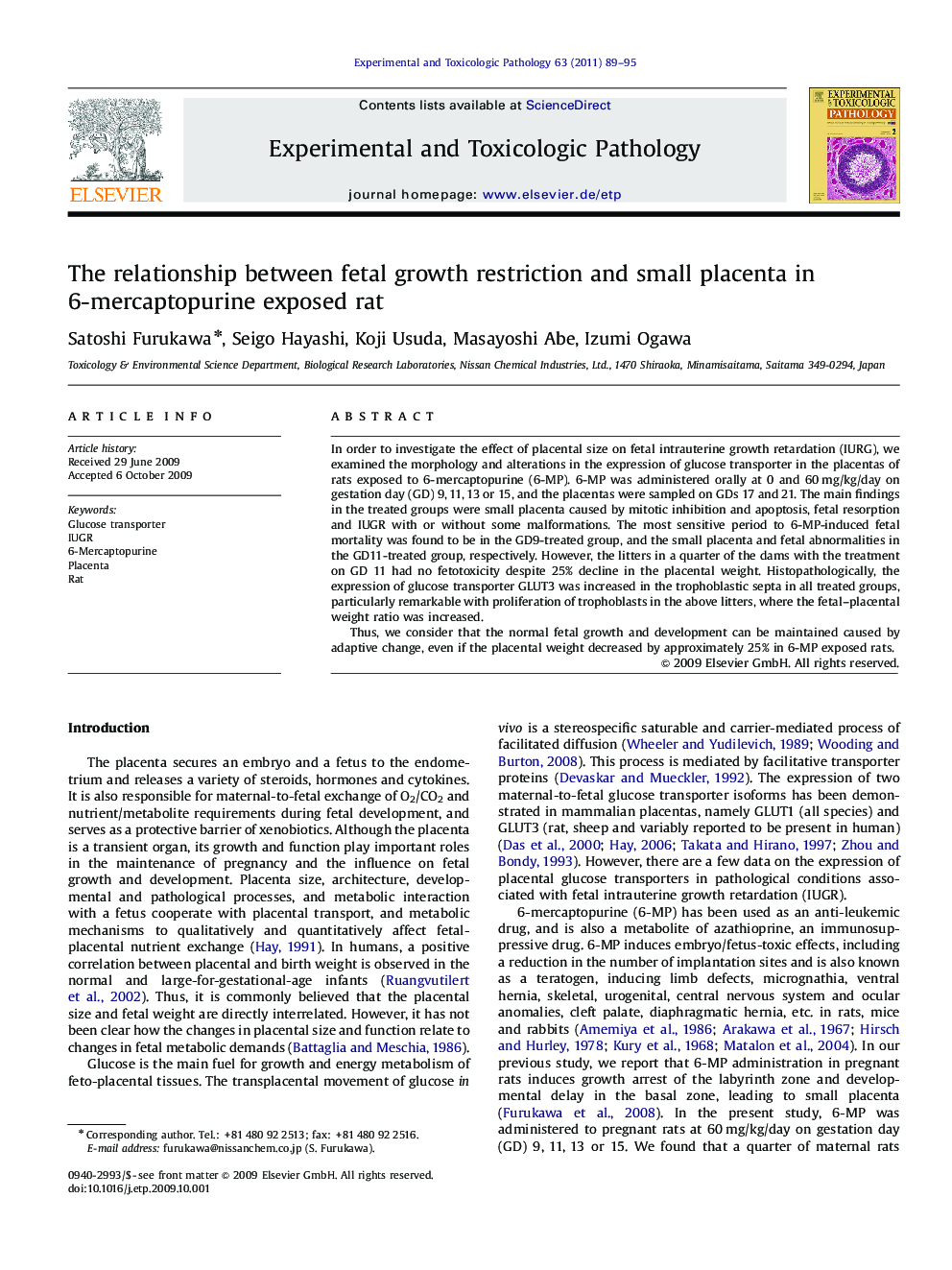| Article ID | Journal | Published Year | Pages | File Type |
|---|---|---|---|---|
| 2499498 | Experimental and Toxicologic Pathology | 2011 | 7 Pages |
In order to investigate the effect of placental size on fetal intrauterine growth retardation (IURG), we examined the morphology and alterations in the expression of glucose transporter in the placentas of rats exposed to 6-mercaptopurine (6-MP). 6-MP was administered orally at 0 and 60 mg/kg/day on gestation day (GD) 9, 11, 13 or 15, and the placentas were sampled on GDs 17 and 21. The main findings in the treated groups were small placenta caused by mitotic inhibition and apoptosis, fetal resorption and IUGR with or without some malformations. The most sensitive period to 6-MP-induced fetal mortality was found to be in the GD9-treated group, and the small placenta and fetal abnormalities in the GD11-treated group, respectively. However, the litters in a quarter of the dams with the treatment on GD 11 had no fetotoxicity despite 25% decline in the placental weight. Histopathologically, the expression of glucose transporter GLUT3 was increased in the trophoblastic septa in all treated groups, particularly remarkable with proliferation of trophoblasts in the above litters, where the fetal–placental weight ratio was increased.Thus, we consider that the normal fetal growth and development can be maintained caused by adaptive change, even if the placental weight decreased by approximately 25% in 6-MP exposed rats.
